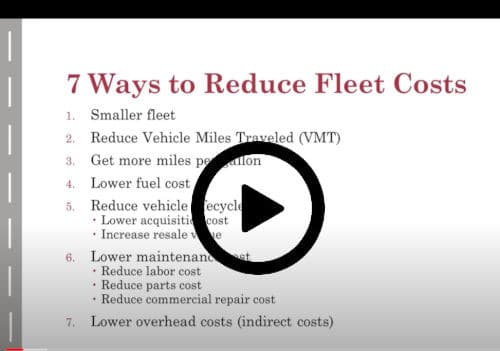Managing a fleet, whether it be a small one or a fleet of hundreds of vehicles, is no easy task. Fleet management is more than simply owning and operating vehicles. A fleet manager is like a business process manager. In recent years, a variety of tools for fleet management optimization have developed. The fleet management industry is projected to grow from USD 19.9 billion in 2020 to USD 34.0 billion by 2025.
What is fleet management?
Fleet management is the management of commercial vehicle operations at scale. Any company that uses a fleet of vehicles as part of their business model can be said to be doing some form of fleet management. Fleet management is all about keeping costs reasonable, maximizing profitability, and minimizing risk.
Track Your Fleet
If you are using outdated GPS tracking to keep an eye on your fleet when your vehicles are out on the road, or even if you previously thought that you had no need for such tracking for a smaller fleet, you should reconsider and invest in a better tracking system. By keeping a sharp eye on your fleet, you can identify any irregularities and your drivers will be more encouraged to stay on track and on time.
You might be worried about complex software that is difficult to use properly, especially if you have hundreds of vehicles to track. Thankfully, systems such as Geotab make tracking your fleet easier and more effective than ever before.
Practice Good Communication
One of the difficult challenges that those who manage a fleet of vehicles face is that a big part of the job involves working with and managing people, as well as goods and vehicles. Managing people can be difficult, especially when those people are spread out across the country making deliveries.
It is important that you adopt the best communication practices possible. You should aim to keep everyone on the same page and keep the lines of communication open between you and your drivers. With effective communication, you can reduce a great many issues that might have otherwise arisen.
Maintain Your Fleet
Another issue that many fleet managers have to deal with involves the maintenance of their fleet. Breakdowns on the road can pose serious risks, not only to your vehicles but also to your drivers. In order to keep your drivers and trucks safe, as well as others on the road around them, you should look to maintain your fleet properly. For instance, something as simple as low tire pressure can reduce fuel economy. Typically tires lose 1-2 psi per month, so if you don’t check tire pressure in your fleet for an entire year the average tire will be 18 psi low. According to the US Department of Energy every one psi drop in the pressure of the tires is going to lower gas mileage by 0.4 percent. So 18psi = 7.2% reduction in gas mileage which also means 7.2% higher fuel costs.
Service your vehicles regularly and don’t ignore any signs that might suggest that there is a problem. Your drivers should be fully educated on what might be indicative of a problem so that such problems can be addressed right away.
Keep Drivers Current on Pertinent Information
Since your drivers are literally at the wheel when it comes to your fleet, you need to ensure that they are always current on the most pertinent information. Training your drivers is not a one-time task, and you should look to update everyone on a regular basis as and when new information becomes available.
You might also like:

